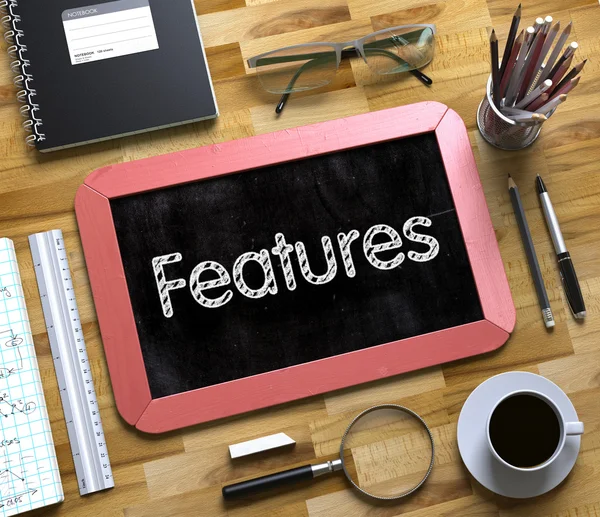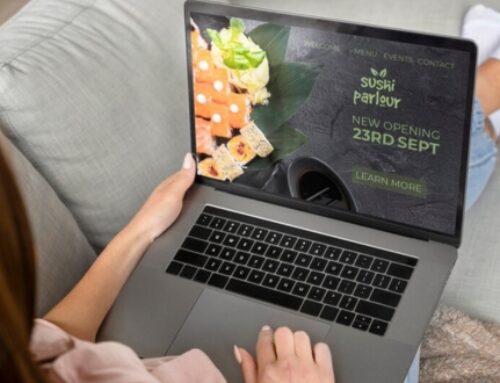This SaaS-based solution for ordering food from many restaurants and making reservations includes payment channels. It’s quick, easy to use, well-documented, and incredibly secure. It is mostly used to create restaurant websites and online systems for ordering, booking, and delivering food.
It will lessen your agony associated with taking customer orders and save you money & time. Customers dislike having to wait for servers. Using this script, customers can create cash-on-delivery orders and book by verifying the availability of days. Customers can get a QR code or place an order via WhatsApp after completing a transaction. A QR code, order ID, or phone number can be used by customers to track their orders. and can keep speaking via WhatsApp for prompt responses. For other events like weddings and birthday celebrations, there is a reservation system as well.
Along with other crucial pages, it features home landing pages. It will work with a number of payment processors, including PayPal, Stripe, and Razor pay. The frontend and backend of it were built using Bootstrap and CodeIgniter 3.7, respectively. Both the admin panel and the user panel are fantastic. You can effectively control it from the admin area without writing any code. All devices can use the application without any issues.
Features of SAAS Online Ordering Reservation System
Multilingual categories and products:
- Restaurants may serve a broad customer base with a variety of linguistic preferences thanks to the system’s flexibility to generate categories and goods in several languages.
- Restaurants may quickly create categories and items in each language, giving patrons a more tailored experience and improving their comprehension and interaction with the menu.
- By presenting their menu in many languages, this option enables restaurants to reach a wider audience and ensures a seamless and individualized experience for guests from various linguistic backgrounds.
Restaurant custom domain or subdomain (extended license):
- Restaurants with the extended license can personalize their domain name or subdomain, providing them a distinctive online presence and business identity.
- Customers will have an easier time remembering the URL of the restaurant’s website and will be able to access the platform more quickly as a result of this feature, which enables the restaurant to build a website address that represents the name of the business.
- Restaurants can improve their online branding and create an image that is both professional and unique in the digital arena by making use of a custom domain or subdomain.
PWA (Extended license) For all dining establishments:
- The Progressive Web App (PWA) technology is included for all restaurants as part of the extended license. This gives customers the ability to access and use the restaurant platform in a seamless manner on their mobile devices.
- PWA enables users to get a native app-like experience through a web browser, enabling them to add the restaurant’s platform on their home screen and use it when they are offline.
- Restaurants may improve user experience, increase customer engagement, and assure accessibility across many operating systems and devices by implementing PWA.
Web Push Notification from OneSignal for New Orders (Extended License):
- With the extended license, restaurants can use the OneSignal Web Push Notification feature to get instant alerts when new orders are put through the system.
- Restaurants will receive instant notifications on their devices whenever a new order is placed, enabling them to react quickly and prepare the order.
- By reducing delays and increasing order management effectiveness, this feature enables restaurants to give their customers prompt, high-quality service.
For all restaurants, OneSignal Web Push Notification (Extended license):
- All restaurants included in the system can now use OneSignal Web Push Notifications thanks to the extended license.
- With the help of this tool, restaurants may use online push notifications to instantly inform their consumers of significant updates, specials, or announcements.
- Restaurants may efficiently interact with their clientele by informing them of promotions, new menu items, and any other pertinent information that improves the clientele’s experience and fosters client loyalty.
Personalized Notification (Admin to Restaurants) (Extended License):
- Administrators are given the ability to send restaurants inside the system personalized notifications thanks to the enhanced license.
- Administrators can build and deliver customized notifications to a single restaurant or a group of restaurants with critical information, announcements, or directions.
- This function enables smooth communication between restaurant managers and administrators, providing efficient operation alignment and coordination.
All restaurants will receive Pusher Notifications (Extended license):
- With the extended license, the system adds Pusher Notification for all restaurants. This lets different activities on the platform send notifications and changes in real time.
- Any relevant system notifications, including those for new orders, order modifications, customer enquiries, and other events, can be sent immediately to restaurants.
- By keeping restaurants informed and enabling quick responses to client demands and system upgrades, Pusher Notifications improve operational effectiveness and client pleasure.
Staff and the delivery guy (Extended license):
- The additional license enables restaurants to control and allocate staff members and delivery drivers within the system.
- For delivery drivers and other staff members, restaurants may build profiles, assign them particular tasks, and monitor their performance.
- This functionality allows efficient team management, streamlines operations, and ensures seamless communication between delivery and restaurant workers.
Merge Order:
- The method enables restaurants to combine several orders into one, streamlining order administration and increasing operational effectiveness.
- When a restaurant receives many orders from the same client or from a group of customers, they have the option of combining those orders into a single order for the purpose of making the processing of those orders more efficient.
- By doing away with the need to manage and track many orders independently, this feature saves time and lowers the possibility of fulfillment mistakes.
Popular payment platforms include PayPal, Stripe, Razorpay, Stripe FPX, Mercadopago, Paytm, Flutterwave, Paystack, and Pagadito Offline. (Extended license):
- Restaurants now have access to a wide variety of well-known payment gateways, giving customers a variety of options for safe and practical online transactions.
- Restaurants may connect payment channels such as PayPal, Stripe, Razorpay, Stripe FPX, Mercadopago, Paytm, Flutterwave, Paystack, and Pagadito Offline, allowing consumers to choose their chosen payment option.
- This function makes sure that the checkout process runs well, increases customer comfort and confidence, and increases the client base by taking into account different payment preferences.
3 Special Themes / Layouts:
- In order to let restaurants customise the look of their online platform, the system offers them a choice of three distinct and aesthetically pleasing themes or layouts.
- Themes that complement a restaurant’s identity and aesthetic preferences can be chosen, resulting in a distinctive and interesting online presence.
- With the help of this tool, restaurants may design a user experience that is visually appealing and unified, boosting both brand identity and client pleasure.
Items with extras, toppings, or add-on options:
- The addition of extras, garnishes, or add-ons to menu items is a way for restaurants to expand their menu offerings.
- Customers can personalize their eating experiences by adding additional toppings or add-ons to their orders.
- Because it provides a higher level of personalization and takes into account individual preferences, this feature encourages consumer happiness and engagement.
Multiple sizes for the items:
- The technology enables restaurants to offer variable portion sizes to accommodate diverse client preferences by supporting multiple size selections for menu items.
- Restaurants can offer menu items in small, medium, and big versions to give customers flexibility and options.
- This feature accommodates patrons with various appetites and budgetary preferences, boosting their overall happiness with their meal.
6 Order methods: Cash on Delivery (COD), Dine-in, Online Booking, Takeaway/Pickup, Pay in Cash (Online Payment using Payment Gateway), & Reservation:
- The system provides a thorough order system that takes into account different order kinds and dining preferences.
- The following types of orders can be handled by restaurants: reservations, takeout/pickup, online payments with cash on delivery, dine-in, and cash on delivery.
- With the help of this function, restaurants may easily and adaptably accommodate the wants and tastes of their patrons.
Location- or area-based shipping fees, or fixed shipping fees:
- Restaurants have the option of setting up shipping costs based on the region or location of their customers or using a fixed shipping fee for purchases.
- With the help of this tool, restaurants can determine shipping costs based on how far their location is from the delivery address of their customers.
- Alternatively, to streamline the price structure and guarantee transparency, restaurants should establish a fixed shipping rate for all orders, independent of location.
Create dynamic QR codes with text, a logo, and items:
- Restaurants are able to develop QR codes that include menu items, company logos, and more text information thanks to the system’s dynamic QR code creator, which is provided by the system.
- Customers can use their smartphones to scan the QR code to view the restaurant’s menu, specials, and other pertinent information.
- By giving users easy access to restaurant details and menu options, this tool improves the dining experience.
Customer rating and feedback via the customer panel are enabled/disabled by customer login:
- Restaurants have the option to enable or disable the customer login feature, which enables customers to register accounts and access extra services like ratings and comments.
- Customers can rate and comment on their dining experiences, which helps restaurants learn useful information and enhance their offerings.
- By giving customers a place to voice their ideas and participate in the restaurant’s ongoing improvement, this feature promotes customer loyalty and engagement.
Print invoice, print from POS, export to PDF (extended license), and view sales data:
- Because of the enhanced license, restaurants are now able to generate and print invoices for order transactions as well as Point of Sale (POS) invoices.
- Invoices can also be exported from the system in PDF format, making sharing and keeping records simple.
- Restaurants can look at sales data and reports to learn more about their income, recognized menu items, and customers’ tastes, which helps them make better decisions.
Adaptive Nearby Store with Products Based on Your Location:
- The system has a dynamic “Nearby Shop” function that, depending on the user’s location, displays nearby restaurants and the food they serve.
- Customers may quickly find and explore eateries in their area by utilizing services based on location, which provides convenience and individualized recommendations.
- By offering pertinent and regionally specific restaurant selections, this functionality improves the user experience and enables users to make well-informed dining decisions.
Dynamic SEO Fields using Facebook Pixel and Google Analytics:
- The system’s dynamic SEO features enable restaurants to enhance their web presence and increase their search engine visibility.
- Restaurants can improve their website’s rating in search engine results and increase their organic traffic by adding appropriate keywords, meta tags, and descriptions.
- Restaurants may improve their tactics and broaden their online reach thanks to the integration with Google Analytics and Facebook Pixel, which offers insightful data on website performance, user behavior, and marketing success.
Order Monitoring:
- Customers are given real-time access to the system’s comprehensive order tracking tool, which enables them to monitor the status and development of their orders.
- Customers are provided with information on the phases of order preparation, packaging, and delivery, ensuring transparency and reassurance about the order’s status.
- This feature increases client happiness by providing a sense of control and awareness over the delivery process, minimizing fear and uncertainty.
Duplicate or cloned goods:
- The method allows restaurants to quickly replicate or “clone” already-existing products, making it easier to add related items to the menu.
- By enabling restaurants to duplicate product details like name, description, and price while making minor revisions as necessary, this tool helps them save time and effort.
- In order to manage their menus effectively and consistently, restaurants can easily add new items to their menus or develop variants of already-existing ones.
Drop and Drag Sorting products:
- Restaurants may simply reorder the products on their menu thanks to the system’s user-friendly drag-and-drop product sorting interface.
- Drag and drop menu items into the correct position allows restaurants to prioritize things on the menu, promote daily specials, or group related dishes together.
- This feature gives restaurants freedom and control over how the menu looks, so they can make a well-organized and attractive layout
Reorder previous order:
- Customers can quickly and easily place new orders for the things they previously purchased by simply clicking a few buttons, saving time and effort.
- Each customer’s order history is saved in the system, making it easy for them to view and duplicate earlier orders.
- Particularly for users who frequently order their favourite things, this function encourages customer loyalty and simplifies the ordering procedure.
WhatsApp dynamic message:
- Customers can use the system’s dynamic WhatsApp messaging capabilities to contact the restaurant directly via WhatsApp.
- Customers can open up a direct line of communication that is simple and easy to use by starting conversations, asking questions, making special requests, or asking for help.
- This function makes providing rapid, individualized client support easier, raising to provide rapid, individualized client support, which raises engagement and satisfaction levels.
Sound and more order notification:
- Restaurants are swiftly aware of new orders thanks to sound alarms that are sent with order notifications.
- When new orders come in, the system can be set up to make a sound, which will get the attention of the restaurant staff even when it’s busy.
- In addition, the system may include order filtering, categorizing, and grouping capabilities, which further improve operational efficiency.
Web push notification on signal:
- Restaurants are able to notify customers in real-time because to the system’s integration with OneSignal, a web push notification service.
- Restaurants can use web push notifications to educate consumers about fresh deals, specials, updated orders, and other crucial information.
- This function assists restaurants in communicating with patrons in a way that encourages repeat business and patron loyalty.
Custom Notification (Administrator to Restaurants) (Extended License):
- A personalized notification can be sent by the administrator to restaurants using the system’s extended license.
- The personalized notification function allows admins to communicate critical information to a single restaurant or a group of restaurants.
- This feature makes it easier for the staff and restaurants to talk to each other and work together. This makes sure that everything runs smoothly and that information gets out quickly.








